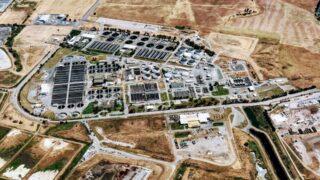The Engineering Firm of the Future: Outcomes, Not Hours
“Done poorly, digital transformation is an exercise in buying tools and services. Done well, it’s a means of leveraging your unique strengths to evolve your business.” – Shyam Sunker, Data is the New Snake Oil
Digital Transformation is a buzzword – but a powerful one.
At worst, digital transformation is a ‘check the box’ exercise in buying tools and services.
At best, digital transformation efforts help you capture and retain market share, double down on areas of expertise to create sustainable competitive advantages, and defend against disruptive changes to your industry and business model.
Digital transformation – specifically outcome based design & automation activities – are primarily a business process change, not a technology selection process. The business transformation enables the selection of technology, not the other way around.
But Adam – why would an engineering firm want that business change – to automate the core, profitable, sale of billable hours for design activities – literally the ‘day to day’ of the bulk of their employees?
Let me pose a few questions:
– What does an engineering business look like in a future where projects are procured & measured by outcomes and not billable hours?
– How about a world where asset owners require engineers to evaluate dozens, hundreds, or thousands of options for a new treatment plant (like doctors now use AI today to make better decisions to diagnose disease)… in the same time and budget they are given today?
– Or a future plagued by extreme variations in weather patterns, an ever-changing landscape of regulatory requirements, and rising energy & commodities prices – where there aren’t enough engineers in the world to evaluate the range of possibilities required to effectively design resilient & sustainable infrastructure for water or power?
How near is that future? What if the firm fails to adapt before that future arrives?
Technology can make, or break, the engineering firm of the future. And by the time this future rolls around (hint: it’s here) it’s too late to play ‘catch up.’
The adoption of design tools in the engineering industry
When calculators were first introduced people were hesitant. How could anyone possibly learn math without doing calculations by hand?
When computer aided drafting (CAD) was introduced there was extreme pushback. How could someone learn to draft if it wasn’t done on a draft board by hand?
When engineering firms started to outsource drafting to third parties or ‘global design centers’ there was an uproar. How could they ensure the quality and rigor of those teams was properly managed if they weren’t local, U.S. educated, and done by hand by those who understood the client’s needs?
Now there’s not an engineering firm on the planet who could be competitive at scale without using one, or more, of these kinds of tools or strategies.
Outcome based design tools are the next wave of digital capabilities that will enable the engineering firm of the future to win
The engineering firm of the future that shifts towards outcome based design and leverages generative design tools can complete repetitive, manual tasks and analyses in hours rather than days or weeks – and do it more profitably with more value created for the asset owner.
As one example, Stanley Consultants recently compressed the timeframe to run three separate process calculations from 5 days to 1 by using design & engineering automation tools – completing the wastewater treatment project on time & under budget.
Firms that choose not to leverage generative design & automation software and work with companies like Transcend will not be able to compete with the likes of Stanley & others.
They’ll instead be forced into a number of scenarios – most of which are “band-aid” attempts at trying to remain competitive:
– No longer perform design work and focus on other activities
– Continue to outsource more of their design work at lower cost to countries like India
– Hire a team of developers to build internal software tools
– Cross train engineers to develop programming skills and automate what they can
Some of these efforts are already happening, and others require an almost unimaginable shift in business model, strategy, resourcing, and company ethos – and history is already littered with the corpses of failed digital transformation initiatives of engineering firms.
Engineering firms are not software companies, and vice-versa. SaaS businesses work because they are literally built to scale – a common metric of successful SaaS companies is profit per employee… the less people, the better.
Engineering firms are effectively the exact opposite – the more ‘butts in seats’ the better – every butt can command a certain number of billable hours, regardless of the actual outcome driven for the client.
A future with design automation
An engineering firm that fully embraces tools like the Transcend Design Generator looks far different.
That firm is focused on outcomes – not hours.
The question is no longer ‘how many hours can I bill to this project?’ but ‘how much value can I deliver to the client in the shortest timeframe?’
The engineering firm of the future has:
– Commercial teams leading conceptual design activities… before winning the bid! This includes full BIM models, P&ID’s, and comparison of options like GHG emissions and carbon impact.
– Engineering teams spending time optioneering, evaluating alternatives, and having a better work/life balance with freedom from copy-pasting and time to create unique & custom outcomes for clients.
– The ability to better scale up and down as project cycles ebb & flow, where executives can lean more heavily on software and reduce hiring/firing needs in cyclical projects businesses.
This world won’t happen overnight. And even for those firms on the journey to an automated future, or considering starting the journey, it’s not as easy as buying an existing design automation software (including the Transcend Design Generator) and hoping for the best.
The business process transformation is where the magic happens. And it’s even more of a reason to work with someone who’s been there before and helped countless others, rather than doing it yourself.
The process of transformation through outcome based design tools
We’ve been working on design automation initiatives since 2012, and users of our software have designed over 10,000 treatment plants to date in over 120 countries. Here’s what we’ve learned about the digital transformation process and ensuring engineering firms have a strong start & ongoing success with their design automation journey.
note: this is a vastly simplified overview of our process –there’s far more detail behind each of these phases… and a whole cadre of talented Transcenders to support our clients 😊
I hope it’s helpful for you as you consider your own path towards outcome-based engineering.
There are three phases to the digital design transformation process – each with its own timeline and cast of characters – but follows the same basic philosophy: Establish the ‘why,’ then create measurable outcomes, and end with execution to succeed into the next phase.
Phase 1: Visionary Leader, Engineering Buy-in, Market Retention
GOAL (the why): Establish buy-in from engineering team leads, develop trust in software platform, codify specific expertise and logic into software
Proposed measurable outcomes (the what):
– Rigorous QA/QC of the platform with >95% pass rate for all tests with new client-specific logic
– Significant reduction in reluctance to test the platform as measured by total number of design runs and user surveys
Process (the how):
Connecting with executive leaders (typically C-level) to drive strategy and vision
Multi-day kick-off with engineering teams and disciplines
Bi-weekly updates for software development team and engineers
Phase 2: Business buy-in, New Market Capture
GOAL (the why): Drive adoption among all relevant members of engineering teams, consider additional needs for software and future state of software, begin routine transformation meetings with regional teams.
Proposed measurable outcomes (the what):
– >50% adoption among ALL members of client engineering team
– Onboard and train any new DG users and measure compliance through attendance rates at trainings in addition to usage rates
– Drive usage and reporting through executive dashboarding
Process (the how):
– 1x yearly vision meeting with senior executives on platform and roadmap for the future
– 2x meetings with senior executives, and 2x meetings with regional stakeholders to encourage adoption of tools at a business/sales level, not just engineering
Phase 3: Strategic growth in non-core areas & exponential value creation
GOAL (the why): Drive adoption of the platform across functions – to include commercial teams, finance, ERP/IT, and others to capture top line value and enhance communication across departments, deliver outsized value to clients and become a ‘market breaker’ (not just a market leader).
Proposed measurable outcomes (the what):
– Integration of TDG with one or more critical business systems (Oracle, Salesforce, Procore, etc.)
– Integrate one new ‘vertical’ into client instance of TDG (retrofit facilities/drinking water/power generation assets, etc.)
– Social metrics (NPS, impressions, press mentions, ENR awards, etc.) for the firm as proven to be a ‘market breaker’
Process (the how):
– Collaborative meetings with C-level leaders in multiple P&L’s
– Integration discussions with external vendors (ERP, CRM, Project Mgmt.)
– 10 year vision setting exercise
Don’t get left behind – ACT today
If any of this resonates with you – or if you vehemently disagree – I welcome your questions and comments. I’ve been in the water & engineering industry for over a decade, with one foot in the corporate world and one in startups, and it’s clear (to me) that the writing is on the wall. If you’re not building the engineering firm of the future, you’re already behind.
The digital disruption has already happened in almost every other major industry. AEC/EPC work is next.
This post was written by Adam Tank, Transcend’s Chief Customer Officer. Reach out to him on LinkedIn.







